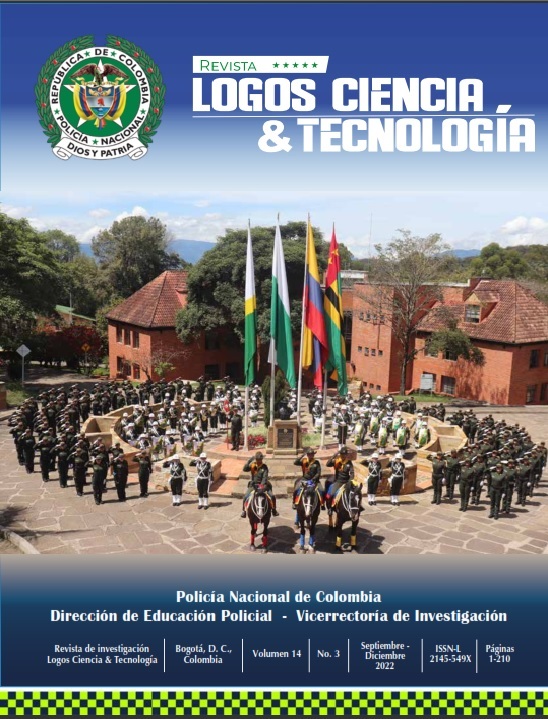Effect of the addition of hemp fiber in the properties of strenght and resistivity in a clayey soil
DOI:
https://doi.org/10.22335/rlct.v14i3.1650Keywords:
Geological Engineering, Soil Mechanics, Construction Materials, Clay, Natural FiberAbstract
The investigation has the aim of finding the effect and adequate proportion of the hemp fiber of 4 cm in length, in the mechanical and resistivity properties of a clayey soil. Properties investigated include optimum moisture content (wópt); the maximum dry unit weight, (γdmax), cohesion (c); friction angle (Φ), unconfined compressive strength (qu), and electrical resistivity (ρ). The modified Proctor compaction tests (ASTM D 1557-12), direct consolidated undrained shear, CU, for cohesive soils (ASTM 6528-17), unconfined compressive strength (ASTM D2166-16) and Wenner’s four electrode test (ASTM G57-01l), were applied to three clay samples with different proportions of hemp fiber; standard sample, Ap, of 100 % clay from the city of Tunja, sample with 0.5 % and 0.75 % hemp fiber, A0.5 %, and A0.75 %, in relation to the dry weight of the material. The results of this study indicate that the optimal percentage of hemp is 0.5 %, showing a decrease in compaction, and an increase in shear strength, electrical resistivity properties and unconfined compression properties; nevertheless, with a greater presence of fiber, there is destruction of the clayey soil.
Downloads
References
Abou Diab, A., Sadek, S., Najjar, S., y Abou Daya, M. (2016). Undrained shear strength characteristics of compacted clay reinforced with natural hemp fibers. International Journal of Geotechnical Engineering, 10(3), 1-8. https://doi.org/10.1080/19386362.2015.1132122.
Abou Diab, A., Najjar, S., Sadek, S., Taha, H., Jaffal, H., y Alahmad, M. (2018). Effect of compaction method on the undrained strength of fiber-reinforced clay. Soils and Foundations, 58(2), 462-480. https://doi.org/10.1080/19386362.2015.1132122
Abu- Hassanein, Z. S., Benson, C. H., y Blotz, L. R. (1996). Electrical resistivity of compacted clays. Journal of Geotechnical Engineering, 122(5). https://doi.org/10.1061/(ASCE)0733-9410(1996)122:5(397)
Álvarez Vega, E. (2018). Efecto de la humedad y el peso específico seco en la resistividad eléctrica de los suelos. I Congreso Iberoamericano y XXXI Internacional en Administración de Empresas Agropecuarias. Tunja.
Ammar, A., Najjar, S., y Sadek, S. (2019). Mechanics of the Interface Interaction between Hemp Fibers and Compacted Clay. International Journal of Geomechanics, 19. https://doi.org/10.1061/(ASCE)GM.1943-5622.0001368
Attom, M., Al-Arkhras, N., y Malkawi, A. (2009). Effect of Fibres on the Mechanical Properties of Clayey Soil. Proceedings of the Institution of Civil Engineers - Geotechnical Engineering, 162(5), 277-282.
Boz, A., Sezer, A., Özdemir, T., Hizal, G., y Dolmaci, Ö. (2018). Mechanical properties of lime-treated clay reinforced with different types of randomly distributed fibers. Arab J Geosci, 122(11). https://doi.org/10.1007/s12517-018-3458
Budhu, M. (2000). Soil mechanics and foundations. Wiley.
Cai, Y., Shi, B., W.W. Ng, C., y Tang, C. (2006). Effect of polypropylene fibre and lime admixture on engineering properties of clayey soil. Engineering Geology, 87, 230-240. https://doi.org/10.1016/j.enggeo.2006.07.007.
Chegenizadeh, A., y Nikraz, H. (2011). Shear Test on Reinforced Clay. Advanced Materials Research, 250-253, 3223-3227. www.scientific.net/AMR.250-253.3223
Converse, F. (1952). The Use of the Direct Shear Testing Machine in Foundation Engineering Practice. Symposium on Direct Shear Testing of Soils, ASTM, 131, págs. 75-80.
Das, B. (2011). Principles of Foundation Engineering. Cengage Learning. Inc.
Eichhorn, S., Baillie, C., Zafeiropoulos, N., Mwaikambo, L., Ansell, M., Dufresne, A., . . . Wild, P. (2001). Review: Current international research into cellulosic fibres and composites. Journal of Materials Science, 36, 2107-2131.
Estabragh, A., Ranjbari, S., y Javadi, A. (2017). Properties of Clay Soil and Soil Cement Reinforced with Polypropylene Fibers. Materials,(114), 195-205.
Fukue, M., Minato, T., Horibe, H., y Taya, N. (1999). The Microstructure of Clay Given by Resistivity Measurements. Engineering Geology, 54(1-2), 43-53.
Hunt, R. (2005). Geotechnical Engineering Investigation Handbook (2nd ed.). Taylor and Francis Group.
Instituto de Hidrología. (1999). El Macizo colombiano y su área de influencia inmediata: diagnóstico, descripción de la unidad regional y propuesta de delimitacion. IDEAM.
Lu, N., Swan Jr, R. H., y Ferguson, I. (2012). Composition, structure, and mechanical properties of hemp fiber reinforced composite with recycled high-density polyethylene matrix. Journal of Composite Materials, 46(16), 1915-1924.
Mazhoud, B., Collet, F., Pretot, S., & Lanos, C. (2017). Mechanical properties of hemp-clay and hemp stabilized clay composites. Construction and Building Materials, 155, 1126-1137. https://doi.org/10.1016/j.conbuildmat.2017.08.121.
Millogo, Y. M., Aubert, J., y Ghavami, K. (2014). Experimental analysis of Pressed Adobe Blocks reinforced with Hibiscus cannabinus fibers. Construction and Building Materials, 71-78.
Mitchell, J., y Huston, W. (1970). Causes of clay sensitivity. Journal of Soil Mechanics & Foundations Div, 95(3), 845-871.
Naik, J., y Mishra, S. (2005). Studies on Electrical Properties of Natural Fiber: HDPE Composites. Polymer-Plastics Technology and Engineering, 44(4), 687-693. https://doi.org/10.1081/PTE-200057818
Najjar, S., Sadek, S., y Taha, H. (2014). Use of Hemp Fibers in Sustainable Compacted Clay Systems. Geotechnical Special Publication, 1415-1424. https://doi.org/10.1061/9780784413272.138
Olgun, M. (2013). Effects of polypropylene fiber inclusion on the strength and volume change characteristics of cement-fly ash stabilized clay soil. Geosynthetics International, 20, 263-275. https://doi.org/10.1680/gein.13.00016
Peck, R. (2016). Ingeniería de Cimentaciones. Limusa.
Pozdnyakova, L. (1999). Electrical Properties of Soils. Laramie, Wyoming, United States of America: Depatment of Renewable Resources.
Prinz, H., y Strauss, R. (2006). Abriss der Ingenieurgeologie. München : Elsevier Spektrum akademischer Verlag.
Richards, L. A. (1954). Diagnosis and Improvement of Saline and Alkali Soils. United States Salinity Laboratory Staff.
Wenner, F. (1915). A Method Using Earth Resistivity. Journal of the Washington Academy of Sciences, 5(16), 561-563.
Whitlow, R. (1995). Basic Soil Mechanics, Third Edition. Essex: Longman Scientific and Technical.
Widianti, A., y Diana, W. H. (2020). Direct Shear Strength of Clay Reinforced with Coir. UKaRsT, 4(2), 151–162.
Downloads
Published
Versions
- 2022-12-10 (3)
- 2022-11-28 (2)
- 2022-10-10 (1)
Issue
Section
License
Copyright (c) 2022 Revista Logos Ciencia & Tecnología

This work is licensed under a Creative Commons Attribution 4.0 International License.
This journal provides free and immediate access to its content (https://creativecommons.org/licenses/by/4.0/legalcode#languages), under the principle that making research available to the public free of charge supports greater global knowledge exchange. This means that the authors transfer the Copyrights to the journal, so that the material can be copied and distributed by any means, as long as the authors’ recognition is maintained, and the articles are not commercially used or modified in any way.
































